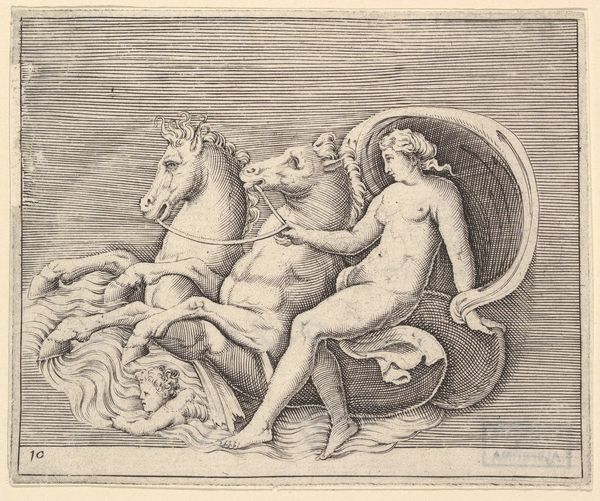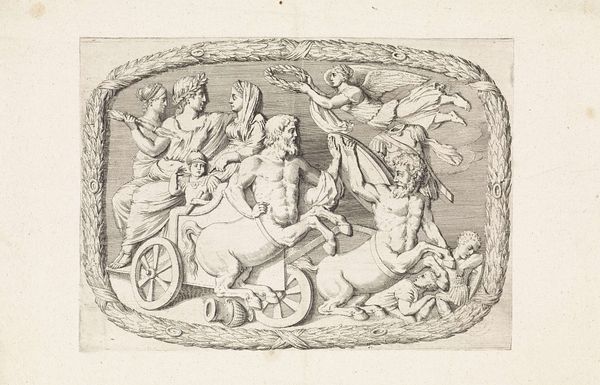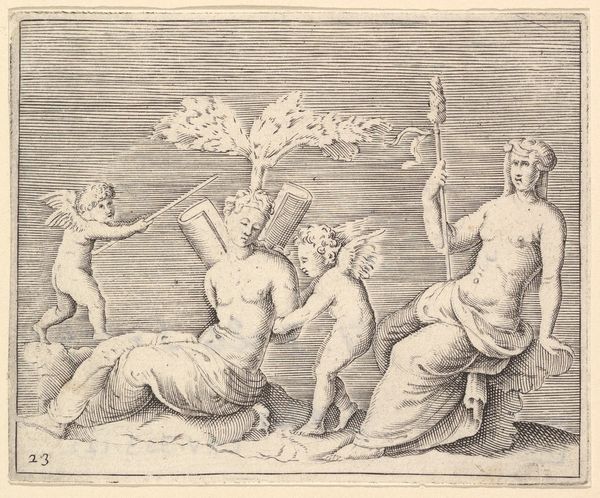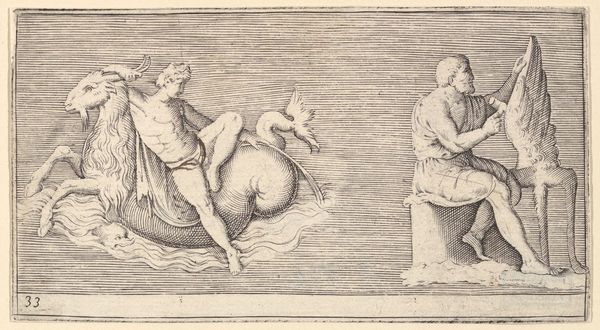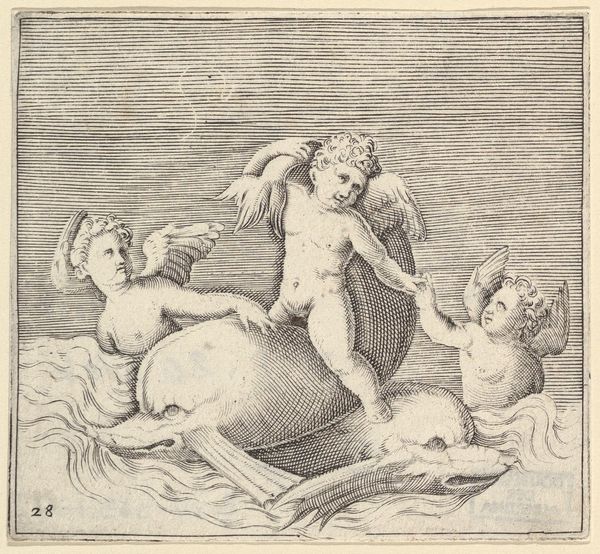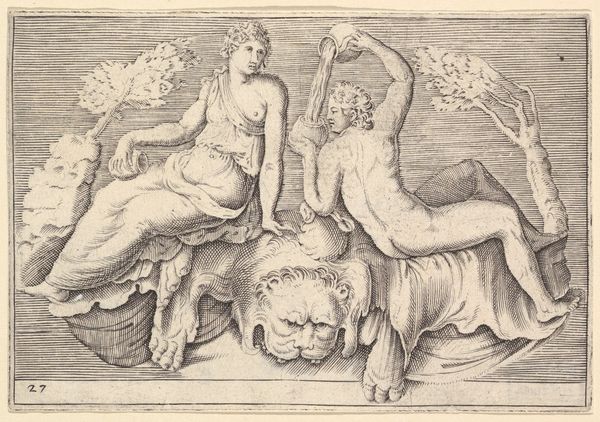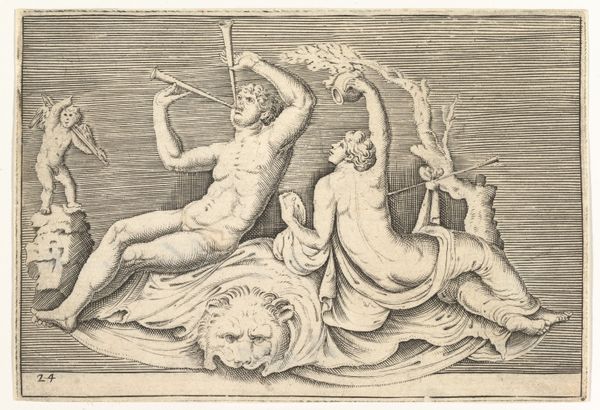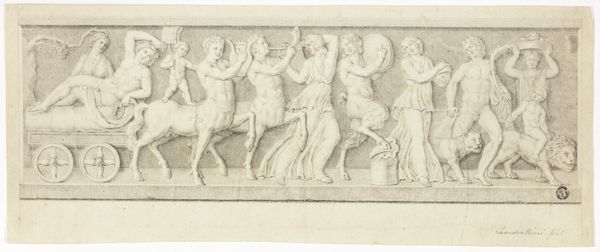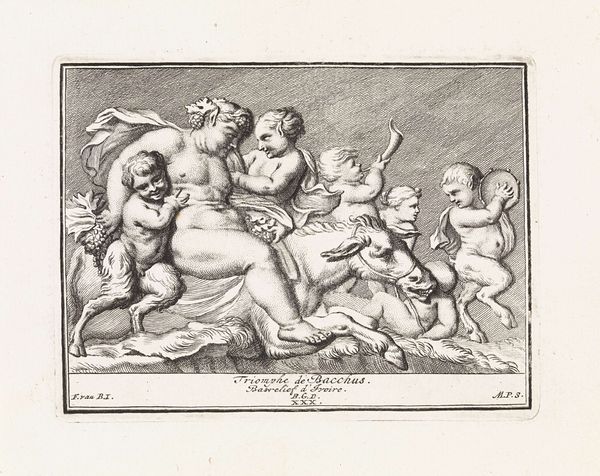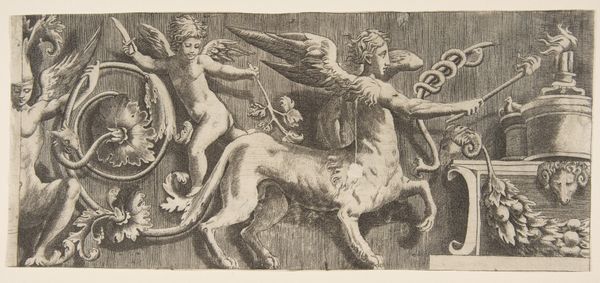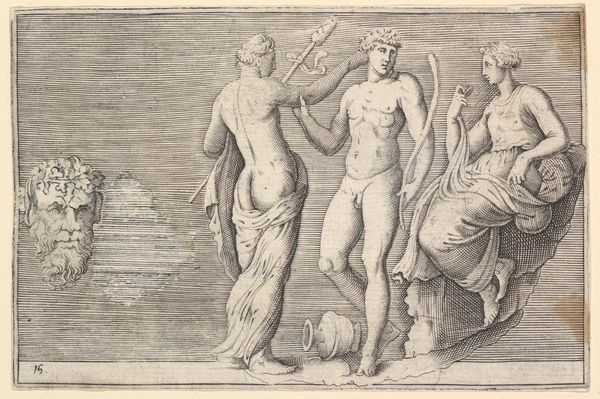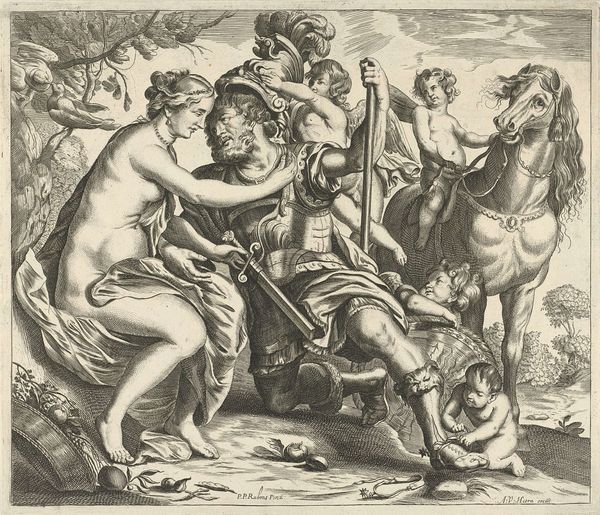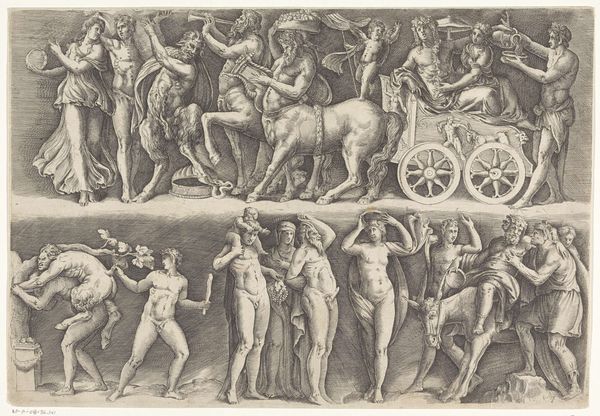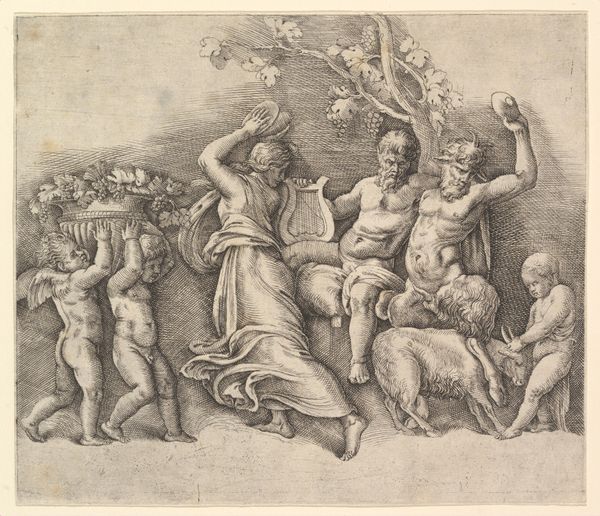
Reclining Female Figure on a Chariot drawn by Two Centaurs, from "Ex Antiquis Cameorum et Gemmae Delineata/ Liber Secundus/et ab Enea Vico Parmen Incis" 1599 - 1622
0:00
0:00
drawing, print, engraving
#
drawing
#
allegory
#
pen drawing
# print
#
greek-and-roman-art
#
figuration
#
ancient-mediterranean
#
line
#
engraving
Dimensions: plate: 3 7/16 x 4 7/8 in. (8.8 x 12.4 cm)
Copyright: Public Domain
This print, dating from the 16th century, shows a reclining female figure on a chariot, drawn by two centaurs. It was made by an anonymous artist using the exacting technique of engraving, a process demanding immense skill and patience. The artist would have used a tool called a burin to carve lines into a copper plate. This painstaking work required absolute precision; each mark contributes to the final image, from the delicate shading of the figures to the bold lines defining their contours. The texture of the print, a result of the engraved lines, gives the artwork a tactile quality, inviting us to imagine the artist's hand at work. Engraving was not just a technical process; it was a means of reproducing images, making art accessible to a wider audience. The print medium itself democratizes image-making, contrasting with the unique, singular status of paintings or sculptures. So, when we look at this print, let’s appreciate the labor, the skill, and the social context that shaped its creation.
Comments
No comments
Be the first to comment and join the conversation on the ultimate creative platform.
